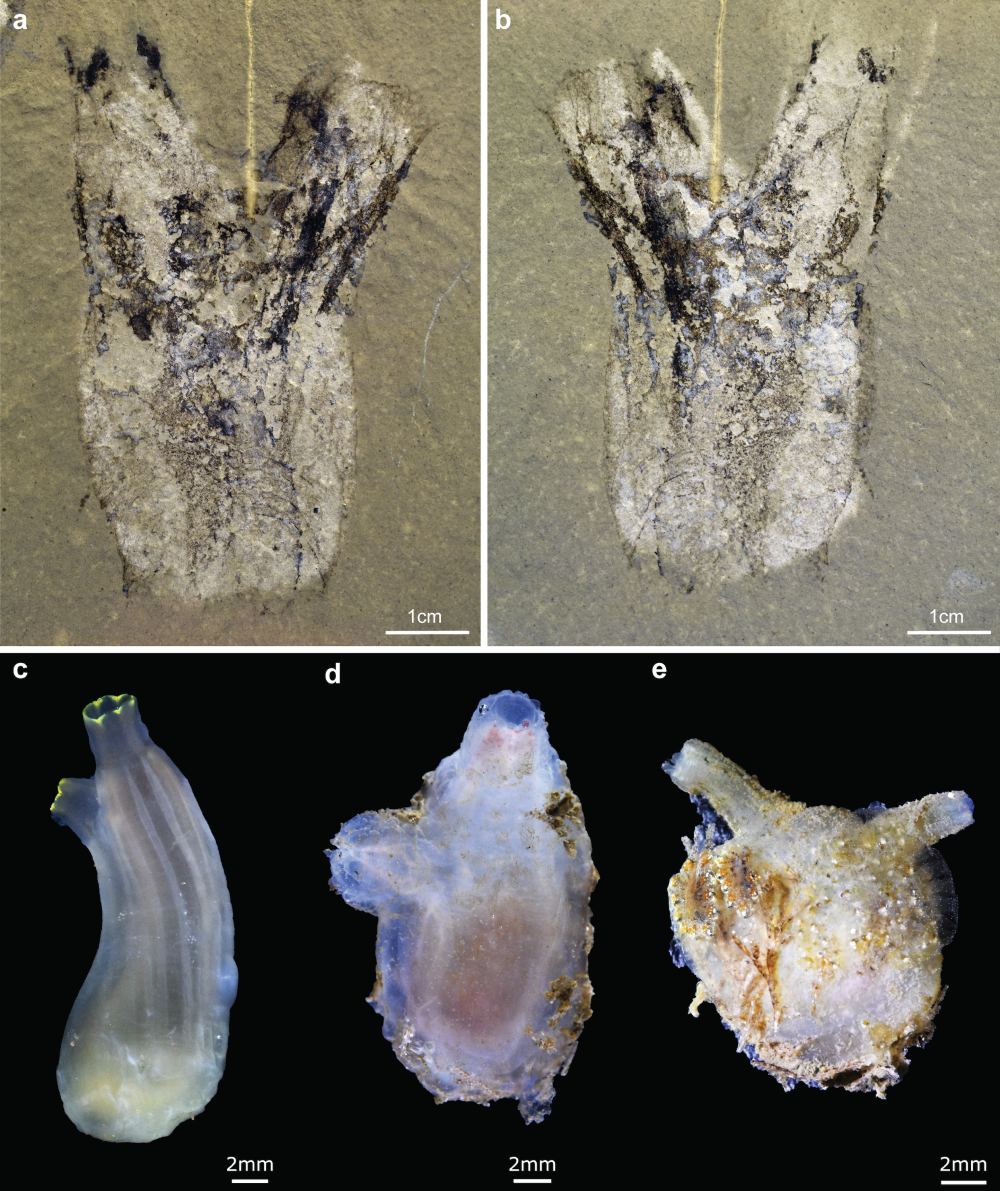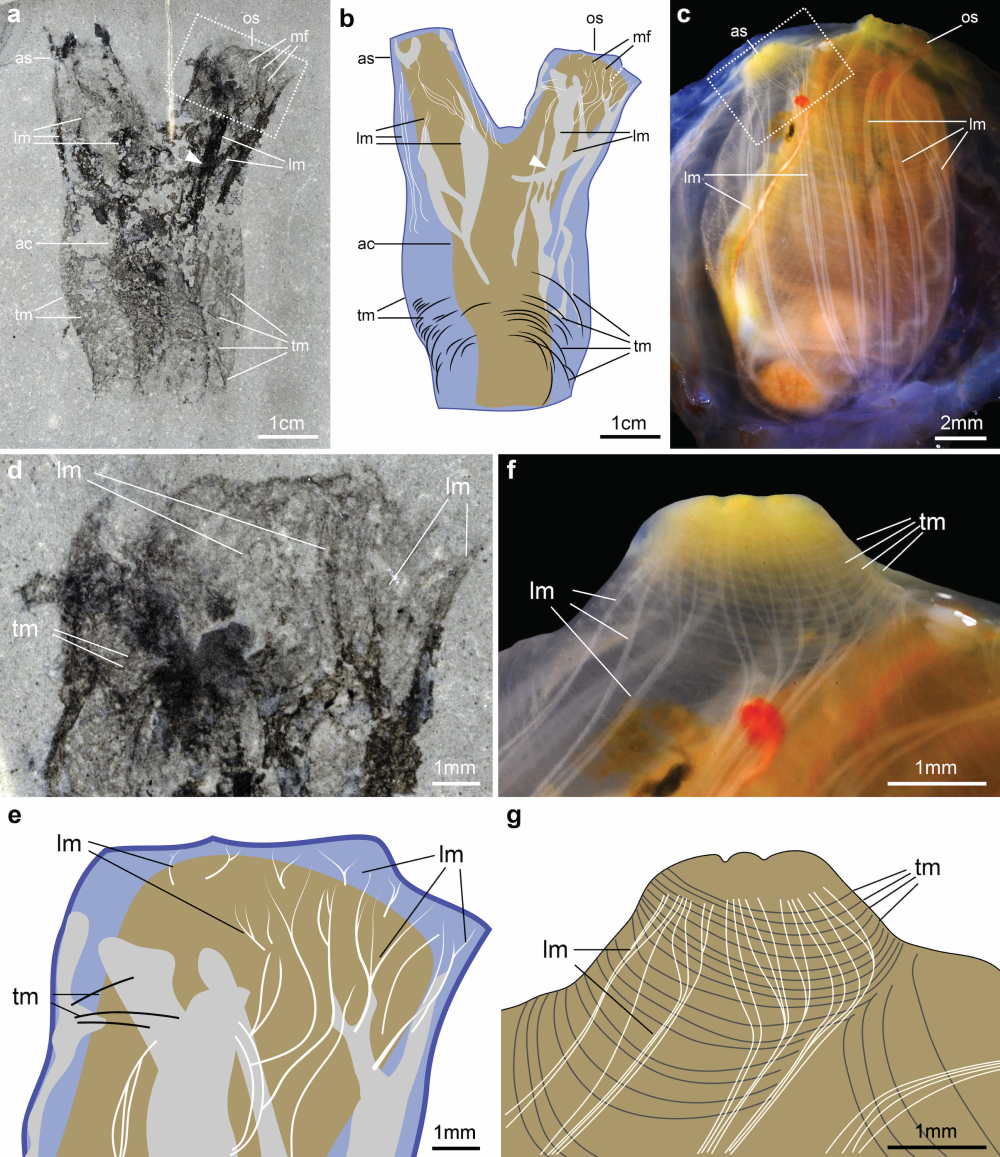An astonishing fossil has ticked off a few world records for tunicate remains, being the first ever to be discovered with soft tissues preserved, and the oldest of its kind at a modest 500 million years old. Named Megasiphon thylakos, it has revealed new insights into the origins of these truly peculiar animals, demonstrating that most of the modern body plan of tunicates was already established shortly after the Cambrian Explosion.
“This animal is as exciting a discovery as some of the stuff I found when hanging off a cliffside of a mountain, or jumping out of a helicopter. It’s just as cool,” said postdoctoral researcher in the Department of Organismic and Evolutionary Biology at Harvard University Karma Nanglu, in one of the cooler statements we’ve seen in recent times.
“It’s so rare to find not just a tunicate fossil, but one that provides a unique and unparalleled view into the early evolutionary origins of this enigmatic group.”
Tunicates are among the most alien of Earthly lifeforms to be found in the oceans. They can be round, they can be blue, they have fish hiding inside, they can be hurtful, they can be purple, they can be pretty much anything they like. Bizarrely, that includes being close relatives of vertebrates.
To the untrained eye, they look like bags of water, which makes the discovery of a 500-million-year-old specimen with soft tissues preserved all the more impressive. With so many floating around in the sea, researchers like Rebecca R Helm have been opening our eyes to the wonderful world of modern tunicates, but a big gap exists in the fossil record, meaning that little is known about their past.

Comparisons between the new Cambrian tunicate Megasiphon thylakos (a,b) with some modern tunicates c: Ciona, d: Ascidiella, e: Molgula.
Image credit: Rudy Lerosey-Aubril (a,b) and Karma Nanglu (c,d,e)
Remarkable fossils like M. thylakos really are as exciting as the stuff you find falling out of a helicopter, then, and it’s already revealed many similarities to modern tunicates. Its barrel-shaped body and two prominent siphon-like growths are classic ascidian tunicate features, but researchers were particularly blown away by dark bands that could be seen running up and down its body.
Using high-powered images and dissected sections of modern tunicates, the researchers revealed both the fossilized and modern specimens share similar musculature and coloration. This means much of the modern tunicate body plan was already laid down shortly after the Cambrian explosion. The discovery also pushes back the origin of ascidiaceans by 50 million years, which were previously only thought to have emerged around 450 million years ago.

M. thylakos had two prominent siphons and a barrel shaped body. It also had prominent longitudinal muscles running from the tips of the siphons to the base of the body. These are comparable with modern tunicates, including Ciona intestinalis, which is dissected in c and f.
Image credit: James Wheeler (a,d) and Karma Nanglu (b,c,e,f,g)
The incredibly rare find was retrieved from the Marjum Formation in Utah, US, which co-author research associate, Rudy Lerosey-Aubril says has long been a site of interest for the team: “The Marjum strata has all of our attention right now as we know that it preserves fossils of animal groups, such as tunicates or comb jellies, that are almost entirely absent from the Cambrian fossil record.”
With a fresh glut of hundreds of fossils gathered this past spring, the team is hopeful there are plenty more incredibly exciting finds to come.
The study is published in the journal Nature Communications.
Source Link: Remarkable 500-Million-Year-Old Tunicate Fossil Is First Ever Found With Soft Tissues